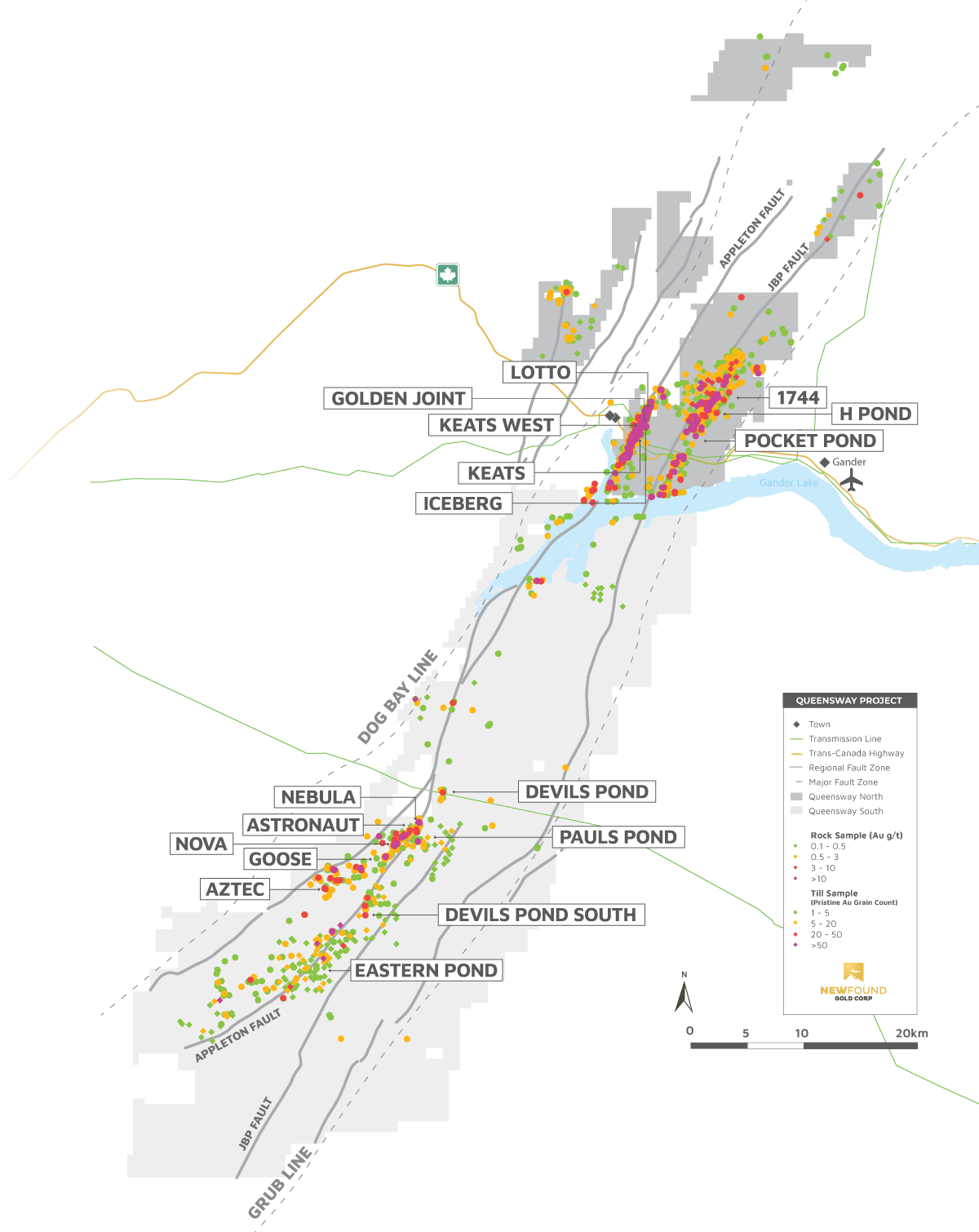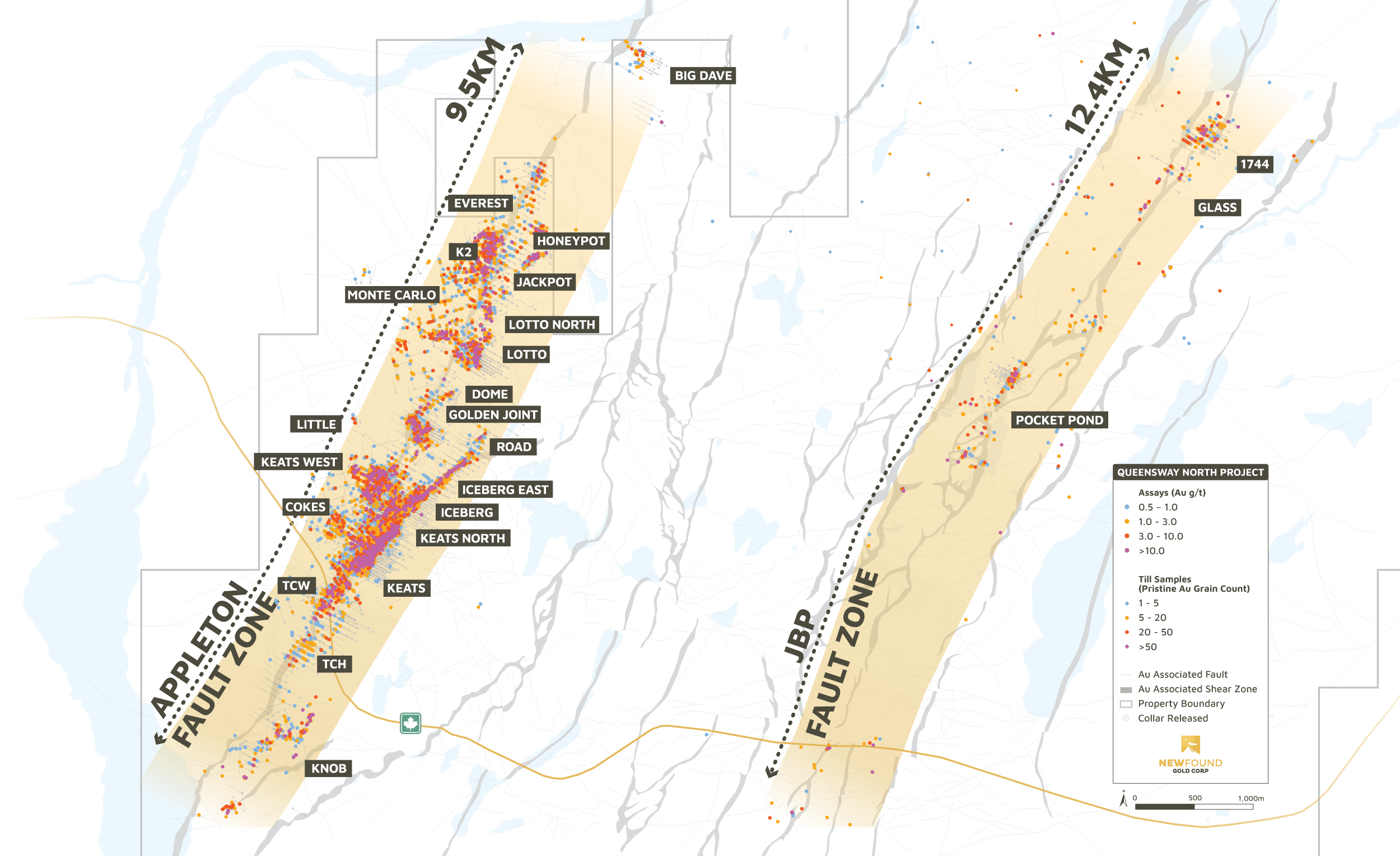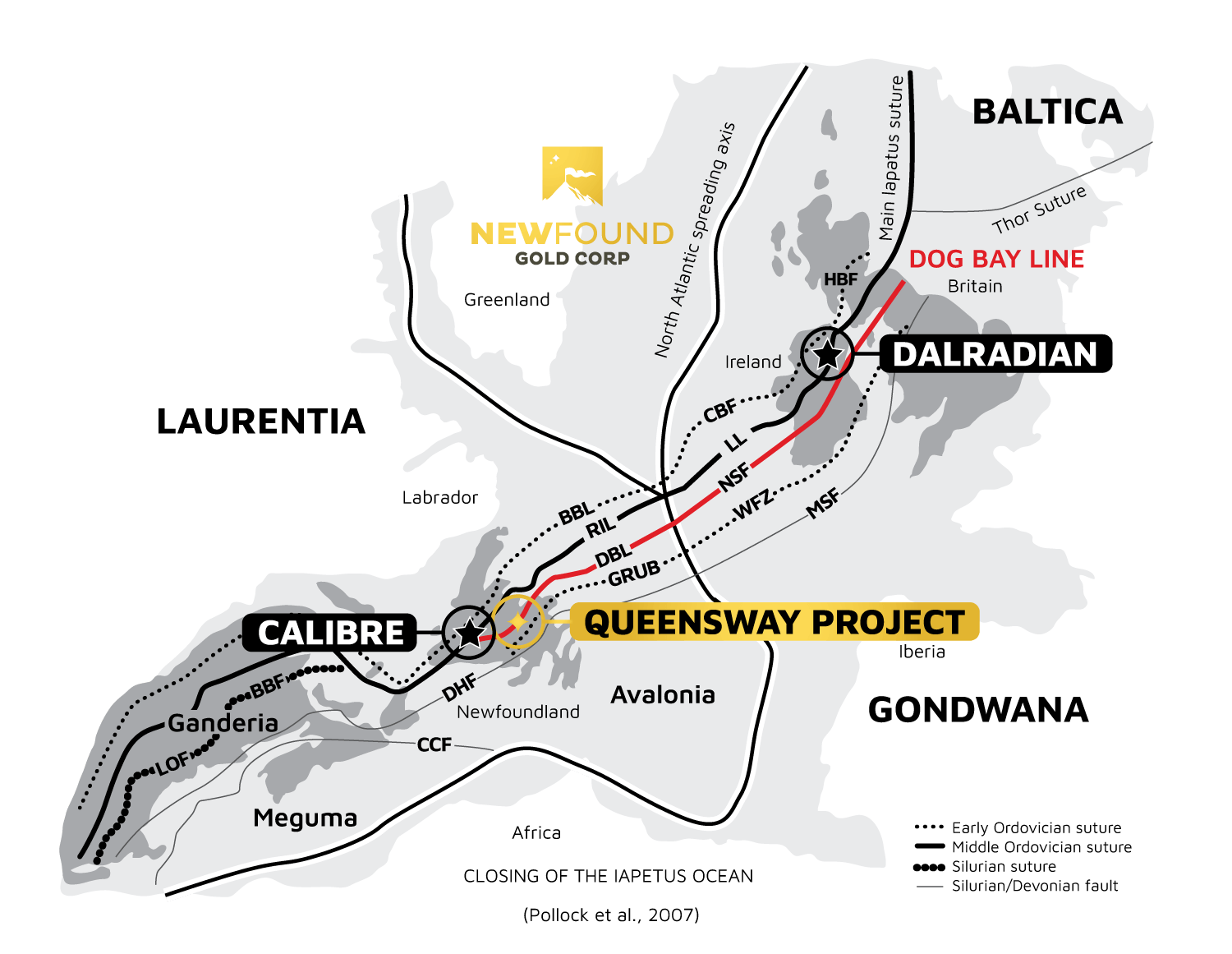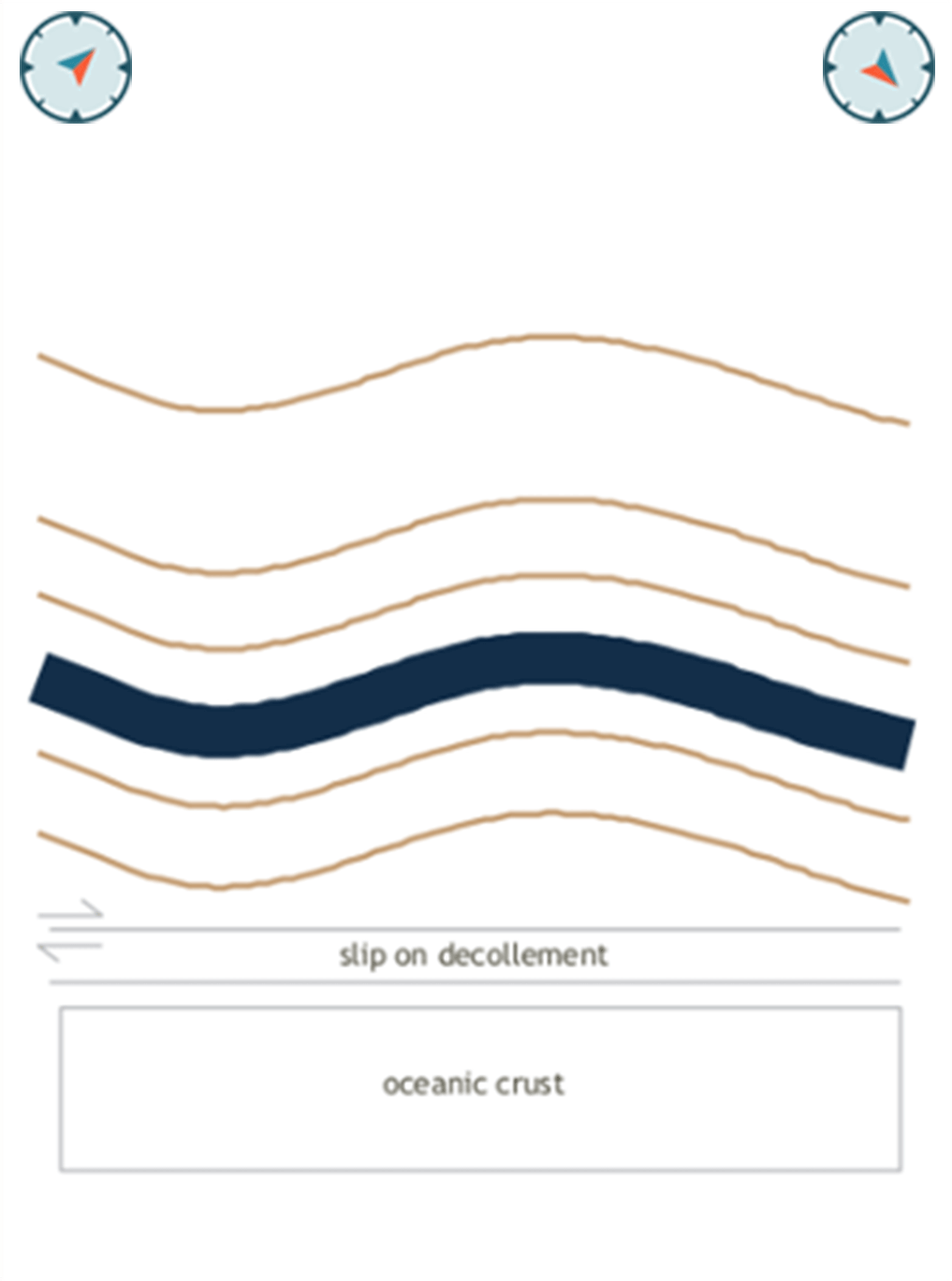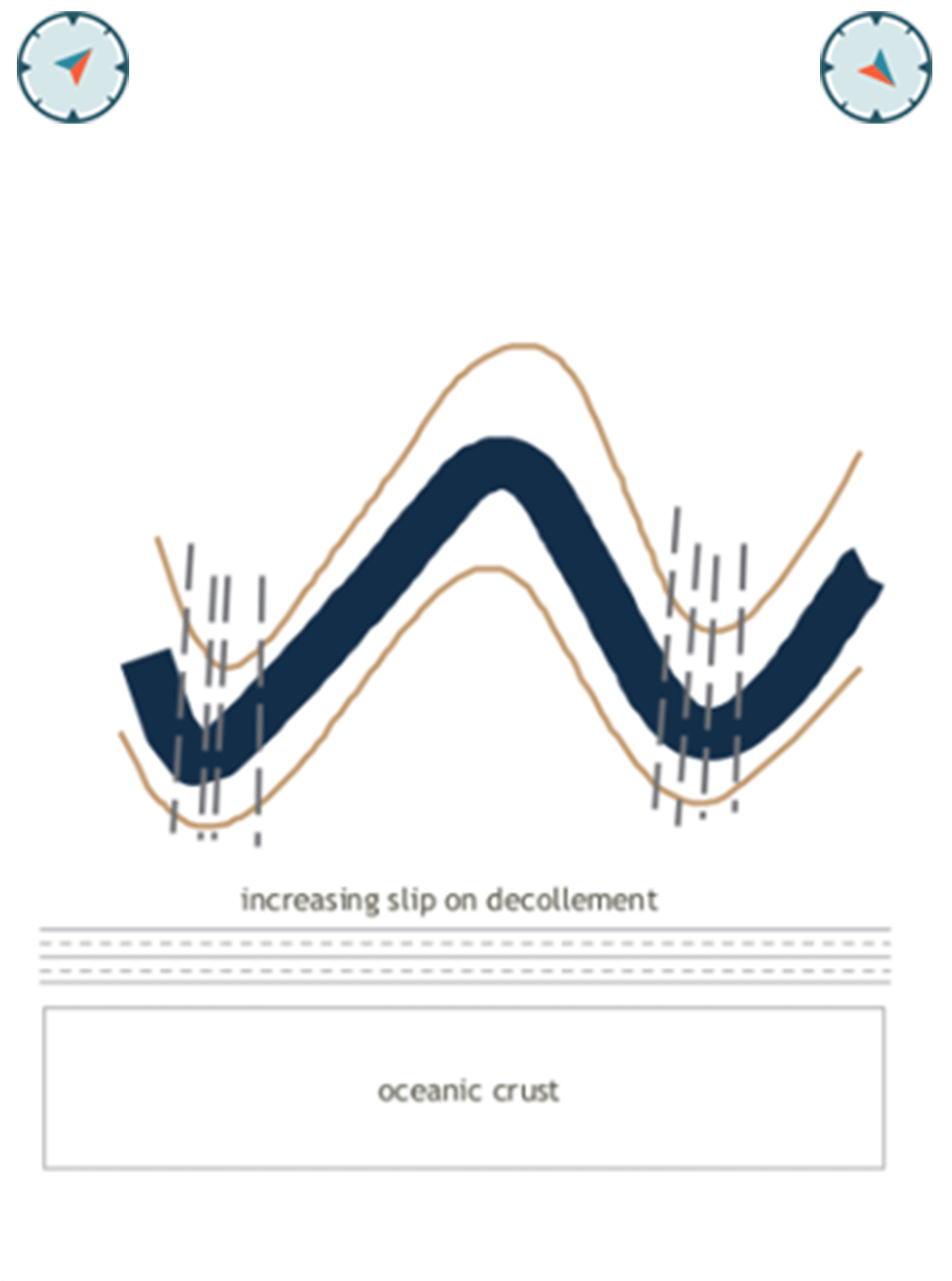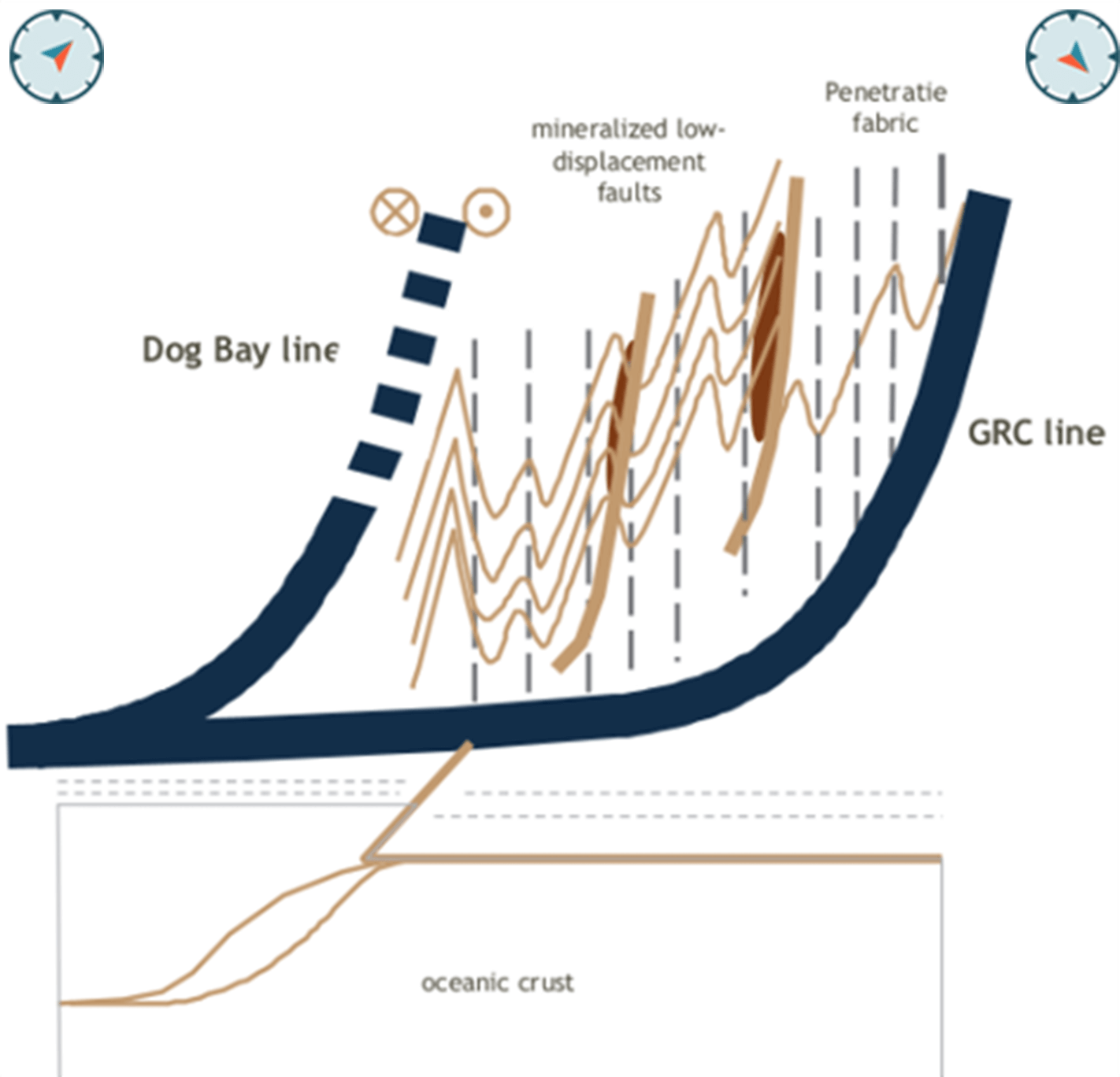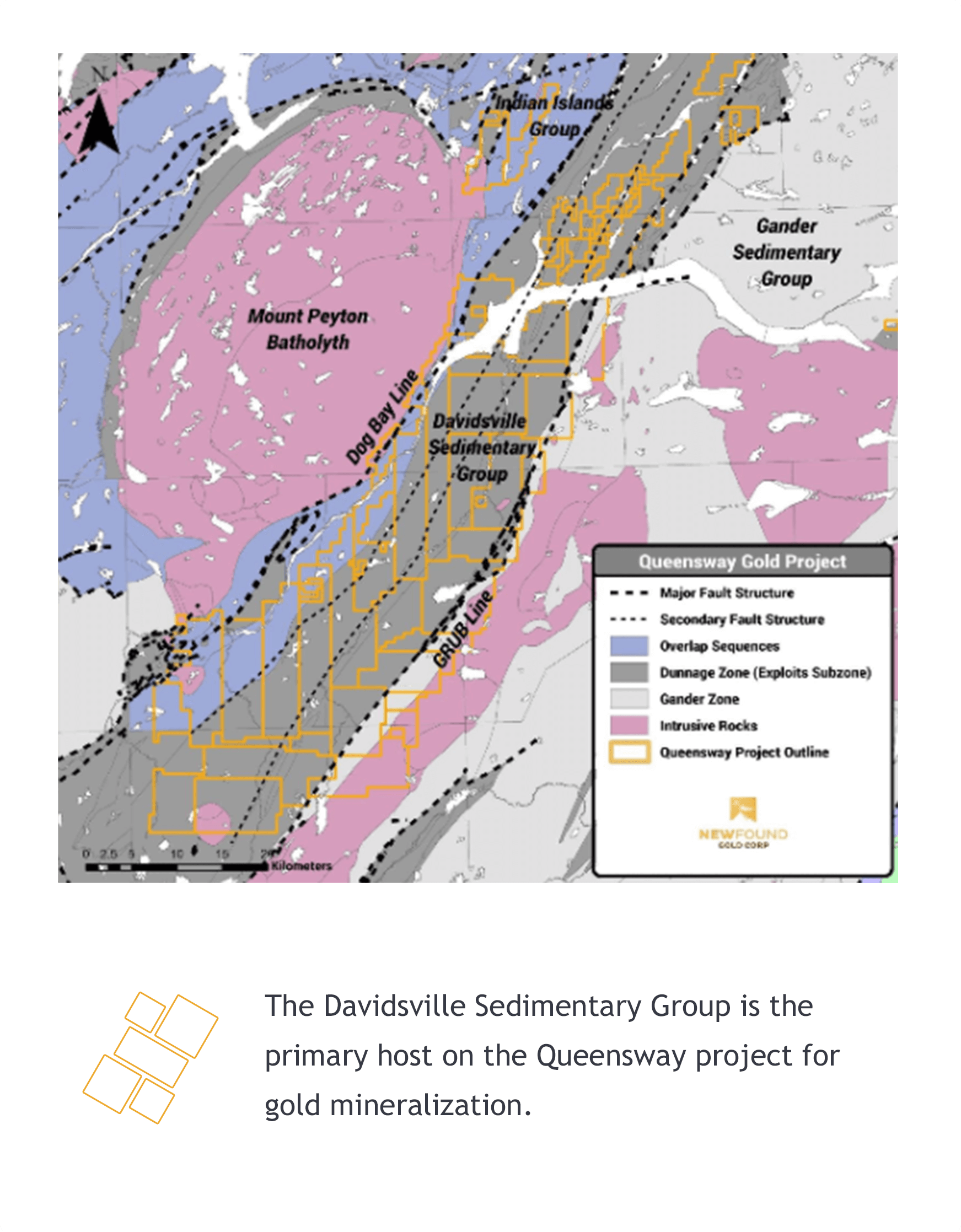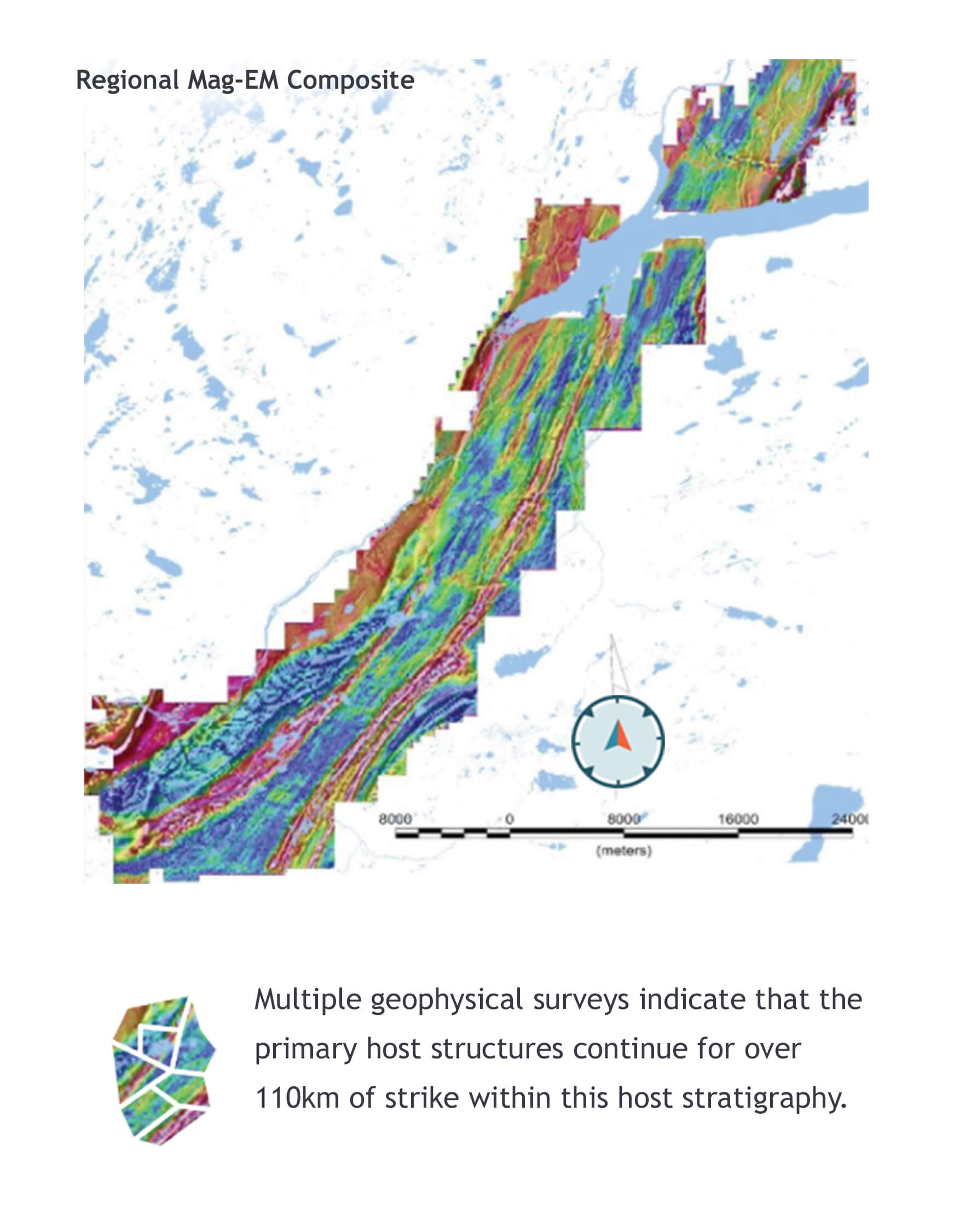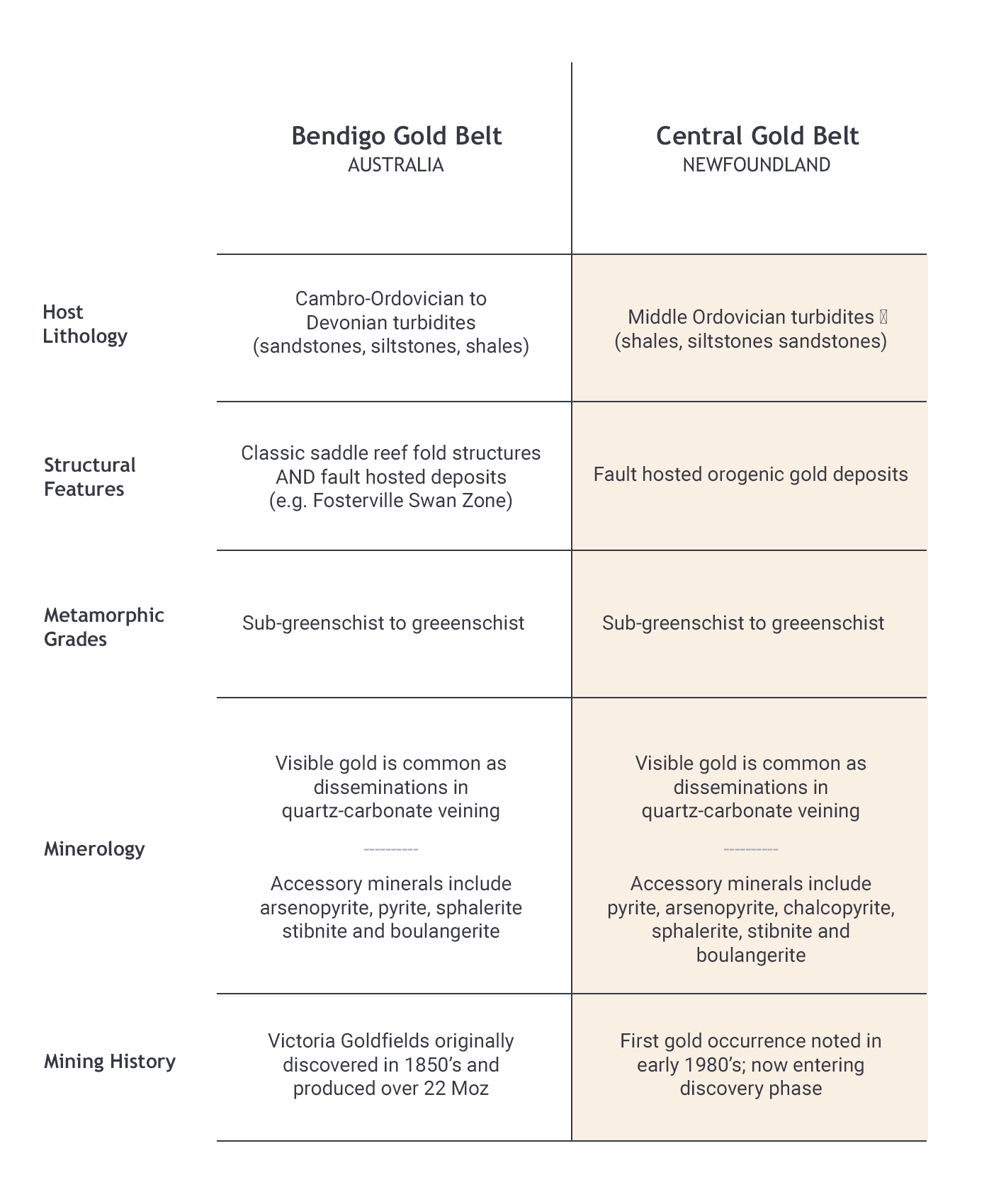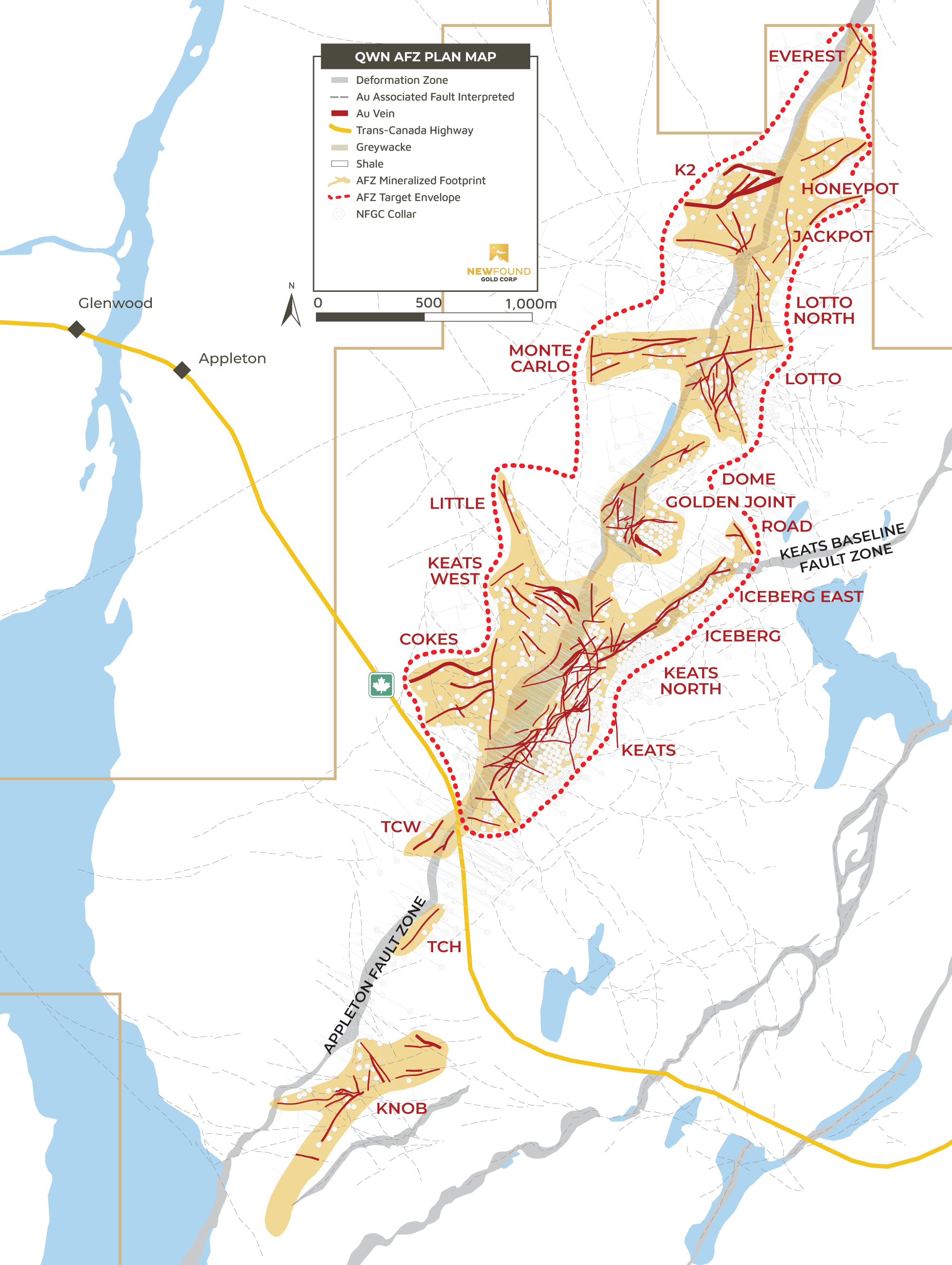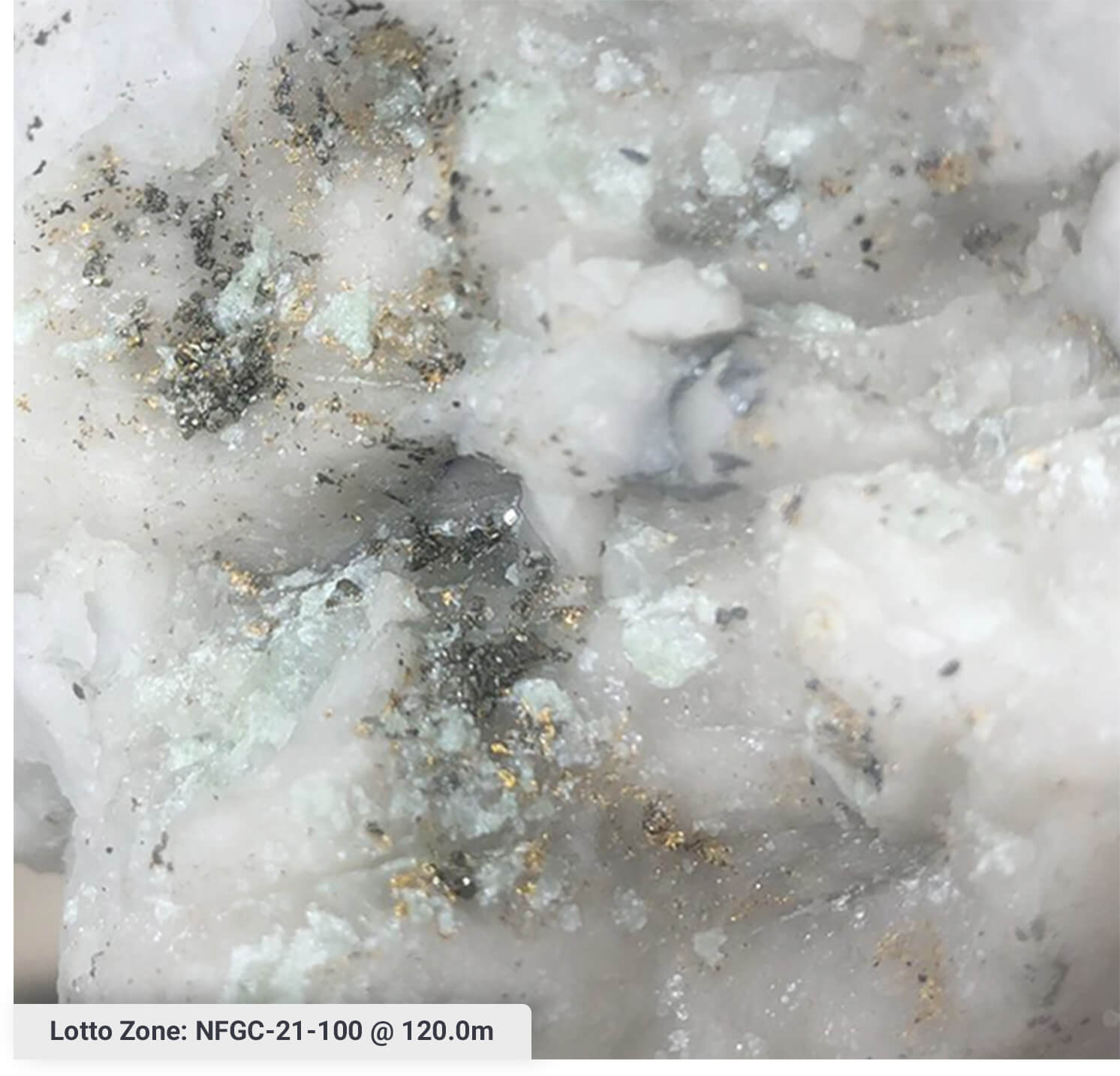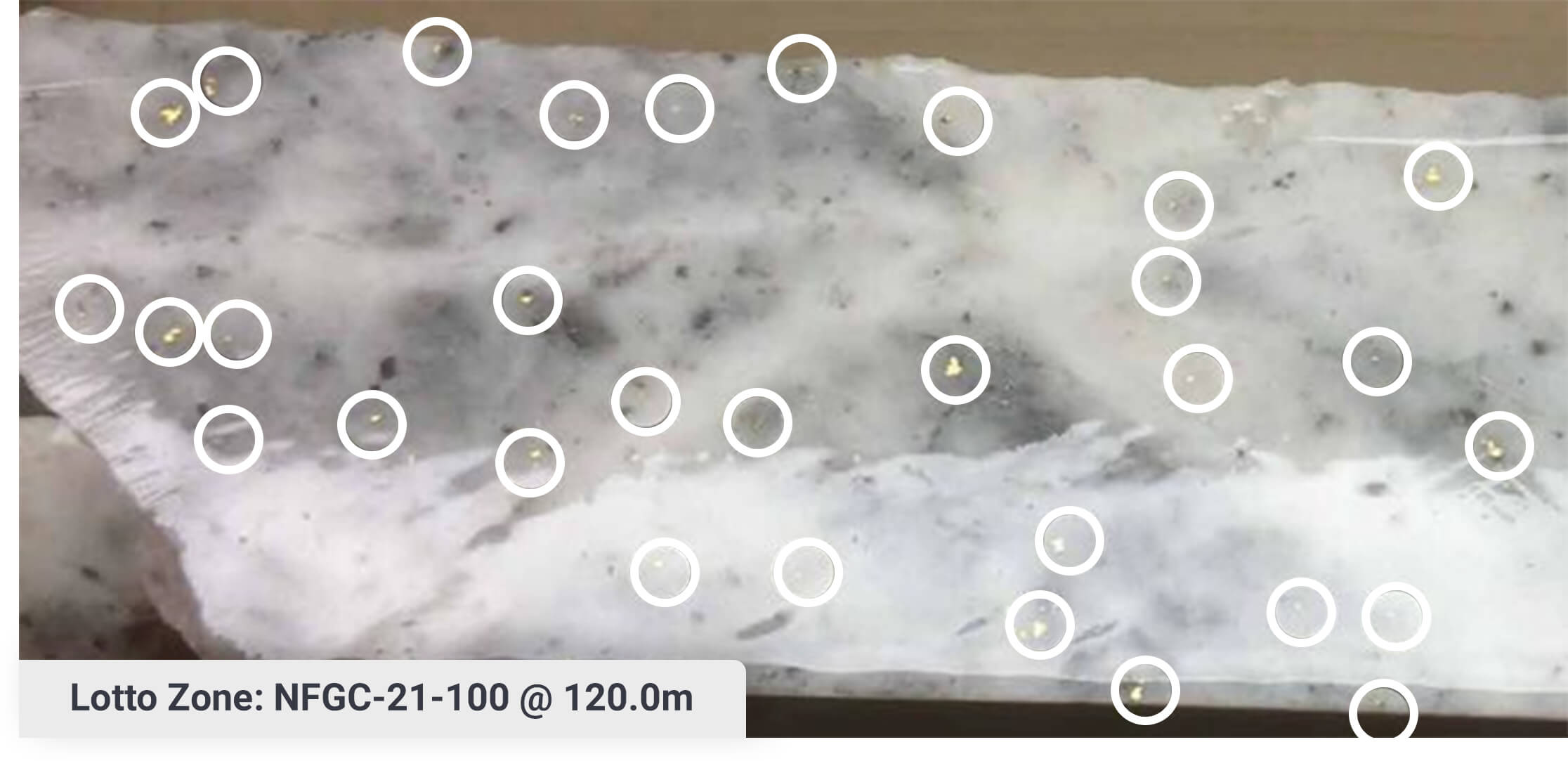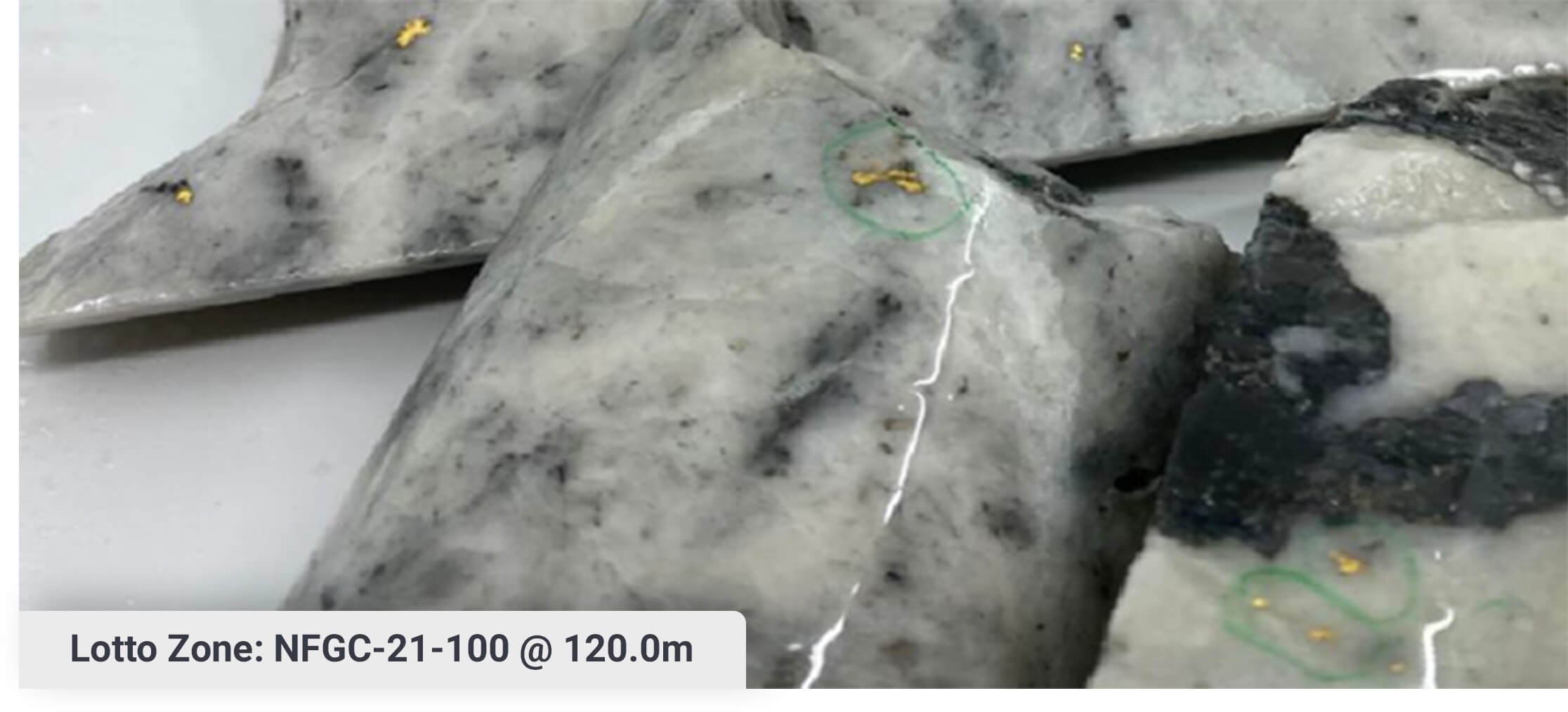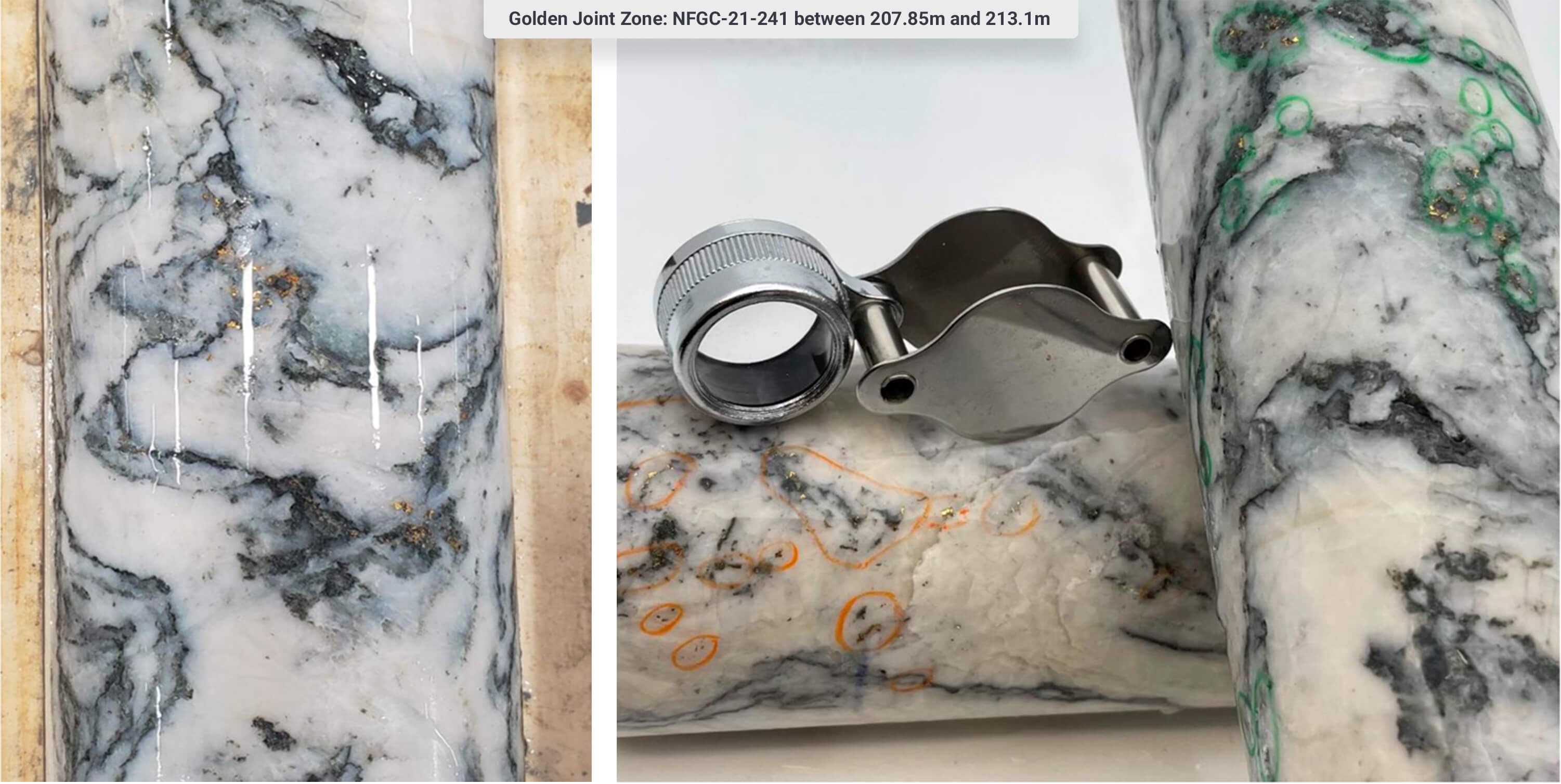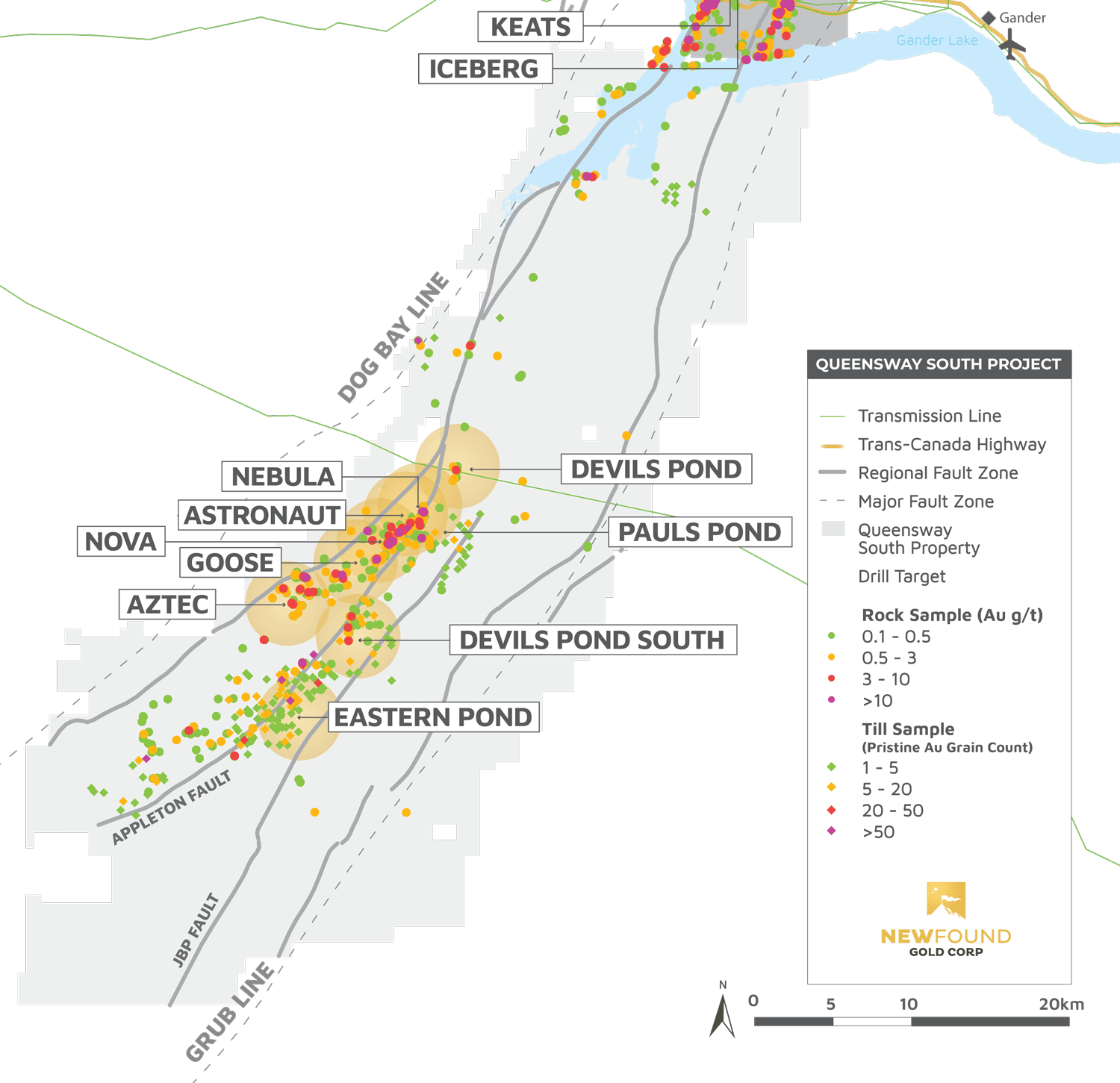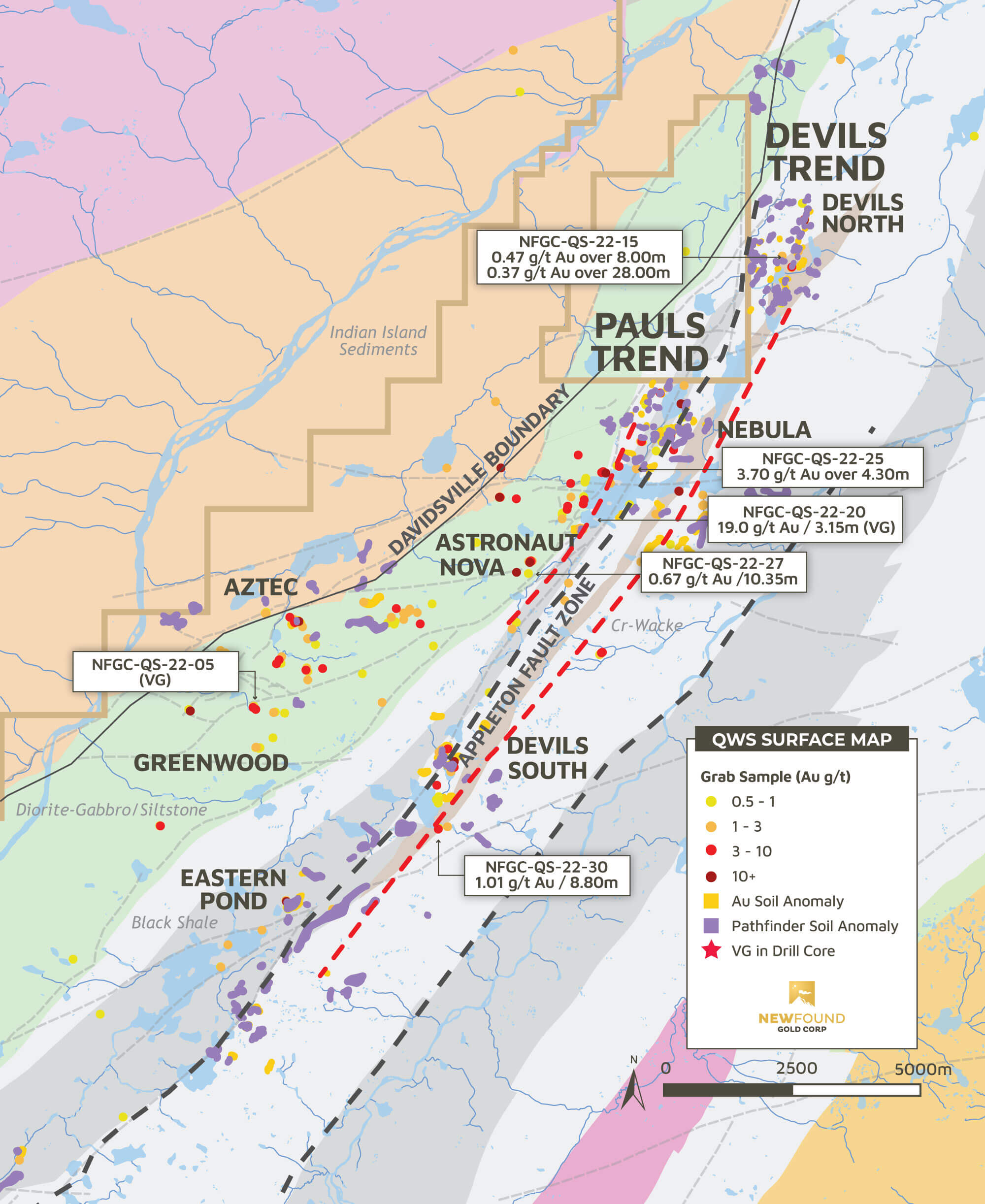Queensway Project Overview
Project Location
Located on the Trans-Canada Highway, 15km west of Gander, Newfoundland.
Primary Zones
1,662km2 project covering more than 110km of strike on two primary fault zones: Appleton and JBP.
Gander Lake
Project divided by Gander Lake into Queensway North and Queensway South.
High-grade Targets
On Queensway North multiple high-grade targets identified along 9.5km of the Appleton Fault and 12.4km of the JBP Fault.
Large-scale Till
A large-scale regional till program has identified large gold in till anomalies coincident with the Appleton and JBP faults on Queensway South.
Queensway North
Drilling is targeting two prominent NE trending faults that are interpreted to be the primary fluid conduits for gold mineralization.
Appleton Fault Zone
- Auriferous networks of epizonal quartz veins hosted within shale and greywacke identified over 9.5km of strike.
- Significant high-grade discoveries made in 2023 include Iceberg, Iceberg East, Monte Carlo, K2, Jackpot, and Everest. Honeypot is the first new zone to be announced in 2024.
- Infill and step-out drilling ongoing on these zones, as well as systematic drill testing of multiple additional targets along the AFZ.
JBP Fault Zone
- Shear zone associated, siltstone-hosted quartz vein gold system identified over 12.4km strike.
- Total historical drilling of 9,872m (54 drill holes).
- Drilling along the JBP fault zone is planned for 2024.
Geologic Setting
Dog Bay Line
The Dog Bay Line (DBL) is a significant suture formed at the closing of the Iapetus Ocean and can be found on both sides of the Atlantic Ocean.
110+km of strike
New Found identified this structure for its significant gold potential and consolidated land holdings over 110km of strike.
Prospecting in late 1980’s
Prospecting did not begin in the Queensway area until the late 1980’s when the first gold showing was recorded.
A number of large gold systems have been found
along this suture zone including:

Curraginalt Deposit
IRELAND

Valentine Lake Deposit
NEWFOUNDLAND

Haile Deposit
NORTH CAROLINA
Structural Setting
Progressive compression, folding, faulting and mineralization of sediments.
High-grade gold mineralization at Queensway focusses on small displacement accommodation faults,
interpreted to be a similar process that focused the more recently discovered high-grade gold at the Fosterville Mine,
initially at the Swan Zone. (Modified from Willman 2007)
Geology and Mineralization
Mineralization
Gold mineralization hosted in middle Ordovician sediments, of sub-greenschist to greenschist metamorphic grade.
Veining
Gold mineralization is fault hosted; visible gold is common as disseminations in quartz-carbonate veining.
Minerals
Accessory minerals include pyrite, arsenopyrite, chalcopyrite, sphalerite, stibnite and boulangerite.
Mineral Systems
While no two mineral systems are ever identical, there is strong evidence to suggest the Central Newfoundland Gold Belt has many similarities to the Victoria goldfields.
History
Bendigo goldfields has produced over 22 million oz of gold over its >150-year mining history.
Gold Mines
Fosterville Mine (Kirkland Lake Gold) is currently in production as one of the world’s highest grade and lowest cost gold mines.
Queensway North Project Overview
Drilling test
Drilling continues to test a corridor up to approximately 1km wide along 9.5km of strike along the Appleton Fault Zone.
High-grade Drill
Recent high-grade drill intervals returned from Iceberg, Iceberg East, and Jackpot along 4.1km of strike on the AFZ.
Gold Targets
Ongoing drilling continues to intersect new veins and zones propagating along a 9.5km corridor of the AFZ. This confirms the Company's interpretation that Keats, Keats West, Iceberg, Golden Joint, Lotto, Monte Carlo, K2, Jackpot, and Everest are all part of the same geological domain and mineralization system.
Glacial Till
Corridor is covered by a thin layer of glacial till. A combination of geophysics, gold-in-till geochemistry, and drilling are being used to generate additional targets.
Mineralization
Advanced understanding of controls on high-grade mineralization across several key zones serve to guide drill targeting.
Drill Testing 12.4 km on JBP Fault zone
High-grade gold system along 12.4km strike length of the JBP Fault Zone
- Significant opportunity for expansion from the existing zones along strike and at depth.
- Very few drill holes reach below 100m vertical depth and significant distances exist between gold zones with no drilling.
- Most of the drilling has occurred along a 3km segment of 12.4km of prospective JBP structure on the northern part of the Queensway Project.
- Zones of high-grade gold mineralization intercepted in Initial drilling on Pocket Pond and 1744 targets (see Company’s March 9, 2022 news release).
- JBPFZ is interpreted to consist of a network of NE-trending, steeply dipping, regional-scale, gold bearing shear zones that extend for +100km of strike on the Queensway project parallel to and approximately 5km east of the Appleton Fault Zone (“AFZ”).
- Reconnaissance diamond drilling completed to date has focused on a +3.5km segment of the JBPFZ that encompasses the 1744 and Pocket Pond target areas.
- Drill programs have intersected several near surface high-grade gold occurrences in the 1744 and Pocket Pond target areas.
- Highlights from drilling at the 1744 Zone include 31.88 g/t Au over 2.05m in NFGC-21-1803.
- Highlights from drilling at the Pocket Pond Zone include 25.40 g/t Au over 2.25m in NFGC-21-3044.
Drilling at H-Pond
- Sedimentary hosted quartz vein gold system identified over 12.4km strike.
- Total historical drilling of 9,872m (54 drill holes).
Significant Historic Drill Intercepts in the H-Pond Prospect
2004-2006 (32 Holes)
Significant Historic Drill Intercepts in the Pocket Pond Prospect
2004-2008 (15 Holes)
Regional Exploration
Systematic Drilling
Systematic drilling underway on Queensway North. Expansion and infill drilling of near-surface discoveries, along with expansion of known zones including Keats Main, Iceberg, K2, Lotto, Golden Joint, Monte Carlo, and Jackpot.
Vectoring methods
Vectoring methods are being applied utilizing data from existing discoveries at the Queensway North project. Additionally, testing of new deep, conceptual targets will be based on seismic interpretation. Soil sampling and structural mapping will take place during the 2024 field season.
Queensway South Target Development
Gold-in-Till Survey
Regional gold-in-till survey work on Queensway South has outlined seven broad areas of anomalous gold in till counts, as shown in gold in the figure to the right.
QWS Exploration
80km southern extension of the highly prospective AFZ and JBP fault structures explored at Queensway North. Resources have been deployed to further explore key targets in the region utilizing drone geomagnetic grids, regional geomorphology, field mapping, and trenching.
Pauls Pond
2022 Exploration Program Highlights
- Inaugural drill program: 7,255m drilled in 33 holes over 82 days at 8 targets
- 27 out of 33 holes hit significant Au mineralization
- Visible gold occurrences in 10 holes over 4 target areas
- 2.5km long Au trend at Pauls Pond
2023 Exploration Program Highlights
- 8,300m drilled in 37 holes completed
- 1,200 rock samples collected
- 9,900 soil samples collected
Results pending

